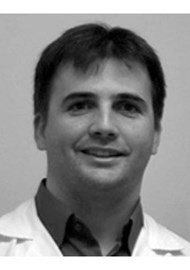Middle third rejuvenation is a hot topic in facial plastic surgery nowadays. Surgical versus non-surgical treatments, lifting procedures versus volumising procedures, transtemporal, transblepharoplasy, deep plane, percutaneou. The number of choices clearly points out the lack of a standard procedures to deal with this problem. The authors of this article explain their mid cheek lift technique performed on 184 patients over the last ve years, alone or in combination with other facial procedures, such as fat-grafting, rhitidectomy or rhinoplasty. The surgery is performed under local or general anaesthesia, depending on the patient and the accompanying procedures and is made with a subciliary incision. Dissection is rst subcutaneous, then suborbicularis and then preperiosteal when it reaches the premaxillary and prezygomatic spaces. Release of the tear trough ligament and orbicularis retaining ligament allows full mobilisation of the soft tissues of the middle third in a safe plane. Suspension of the cheek is made using non-reabsorbable sutures from the orbicularis to the lateral orbit periosteum and orbital fat bags can either be reduced or transposed. A canthopexy is routinely made on almost every patient. Results show a marked improvement in middle third aesthetics and a high patient satisfaction rate. The preperiosteal approach eliminates the typical problems associated with subperiosteal dissection of the maxilla and zygoma, such as prolonged swelling and tear trough deformity relapse. A profound knowledge of facial middle third anatomy allows the surgeons to safely perform this surgery; with complications, sequelae and reoperation rates being very low. Although the pre and post images are not very impressive, the large number of cases and the high satisfaction rate make this a very interesting paper for surgeons engaged in middle third rejuvenation.
Mid cheek lift
Reviewed by Eduardo Morera Serna
Mid cheek lift utilizing facial soft tissue spaces of the mid cheek.
CONTRIBUTOR
Eduardo Morera Serna
Hospital Universitario Son Espases, Palma de Mallorca, Spain.
View Full Profile



